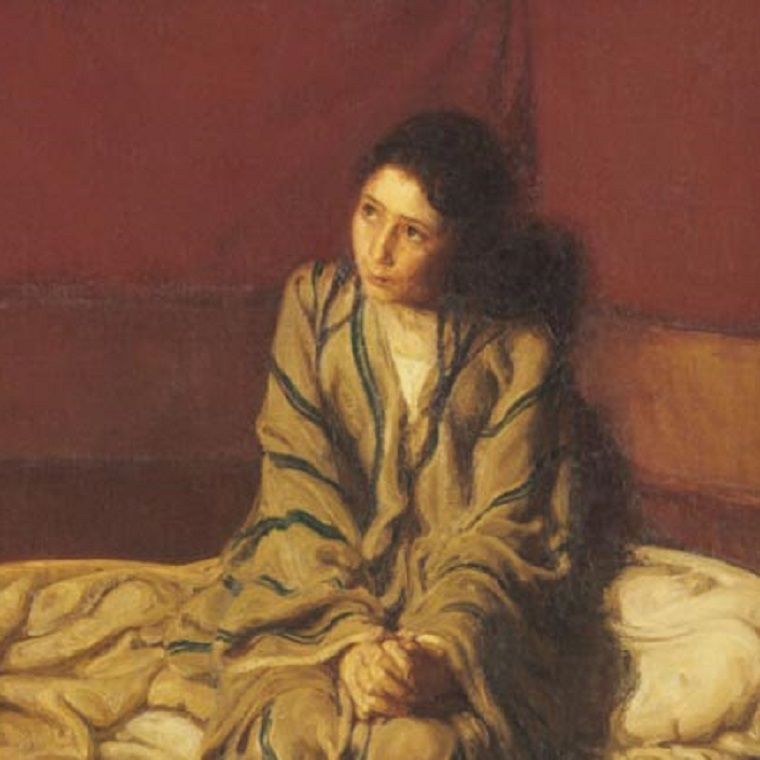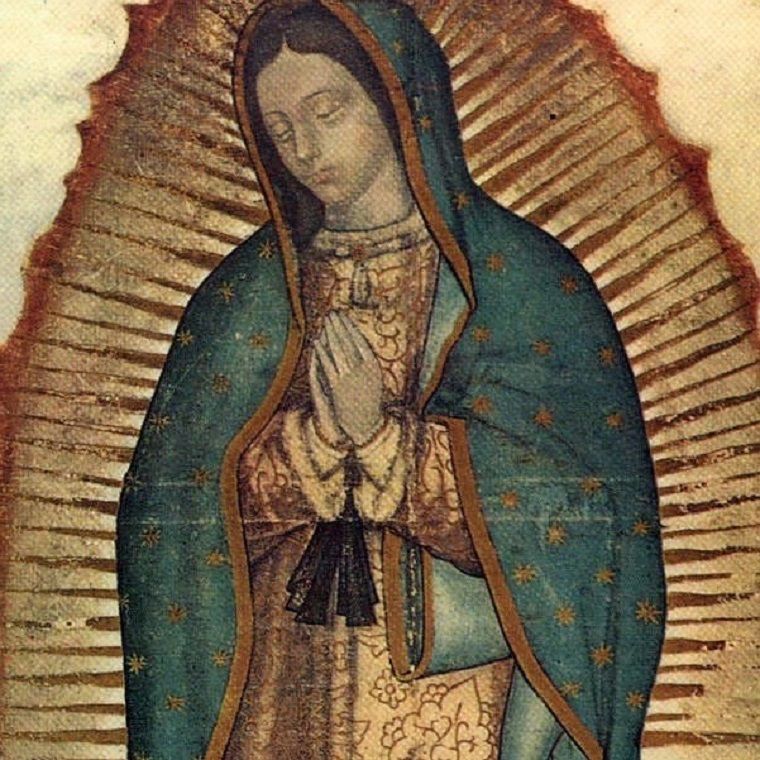
Use this guide for your own reading and contemplation of The Weight of All Things by Sandra Benítez.
Reading The Weight of All Things
Sandra Benítez wrote The Weight of All Things drawing from her personal experience growing up in El Salvador, Mexico, and the United States. As a Puerto-Rican American living in diverse contexts, Benítez developed an understanding of multiple cultures and “how the people in each culture think about the other.” In her novel, the reader experiences a textured and vivid account of Salvadoran people, beliefs, landscape, and daily life against the backdrop of El Salvador's civil war.
Reading The Weight of All Things invites the reader to dive deeper into Salvadoran culture and history and to encounter this country through the eyes of a young boy. Salvadoran beliefs and practices are deeply indebted to Catholic faith and practices, which are distinct from American evangelical theology and devotional practices. Because of these cultural and religious differences, Core Book readers are invited to explore the reading guide below for more on El Salvador’s history, people, and religion.
As you read the novel pay attention to your responses to the text—curiosity? sorrow? disagreement? hope? How you respond can help determine what is at stake for you as you encounter the novel's characters and their culture, and where God might use this story to provoke reflection or change.
Questions for Study and Reflection
Dr. James Huff (Human Needs and Global Resources and Anthropology)
Dr. Tiffany Eberle Kriner (English)
- Review Benítez’s “Historical Note” prior to the opening of the book. Consult the study guide resources about Oscar Romero and his funeral. Then, consider how the opening scene portrays the event. How does the opening scene’s formulation of an actual event affect the reader’s understanding of the novel’s main concerns?
- In the chaotic opening scenes, Nicolás retrieves one of his mother’s shoes, which “looked like a broad little boat, one he might set to bob on the river” (pg. 6). How do Benítez’s small details—the mother’s shoe, of the river, of imaginative play by the riverside—work to set forth big ideas in the novel?
- Consider Nicolás’ decision to sit beside an old woman on his bus ride to Chalatenango (pg. 17). Note the various military and paramilitary groups that he hoped to avoid on his bus ride. What can you learn from Chapters 5 and 6 of The Salvador Option by Russell Crandall about the “abiding presence” (18) of the National Police, the Treasury Police, and the National Guard? What are these groups and what purpose did they serve prior to the civil war?
- On p. 32, Benítez presents a detailed description of the condition of the sacred object that Nicolás searches for (and finds) among the ruins of the church in El Retorno. How can this object—especially its condition and relation to Nicolás—help us to understand the big ideas about war and religion and loss in the novel?
- In chapters six and seven Nicolás finally makes it home to his rancho. Note how Benítez details the landscapes and natural environments that Nicolás calls home in these chapters. How do the details in the text characterize the relationship between people and land?
- Consult Pew Research on Latin American religious beliefs to consider how Catholic belief functions in a Salvadoran context. How does The Weight of All Things frame Nicolás’s first encounter with la Virgen at the end of chapter seven (pg. 43)? How would the author explain la Virgen’s speaking to her protagonist in the cave?
- Women played a significant role in revolutionary movements in El Salvador. It is estimated that close to one-third of the FMLN army was comprised of female combatants. In The Weight of All Things we meet Dolores, who is the captain of the FPL forces that commandeer Tata and Nicolás’ rancho. Why do FPL forces decide to take over the rancho in the first place? How does Dolores explain the FPL’s purpose and work (pgs. 51 -55)? In her estimation, who (and what) is the FPL is fighting for? What do you think of how she treats Nicolás and Tata in chapter ten?
- Carefully review niña Tencha’s “homily,” which begins on page 72 and continues to the end of the chapter. What do we learn from this Salvadoran woman and mother about the effects of the civil war? What literary ways does Benítez shape niña Tencha’s language as she recounts the experiences of her family members? What is the emotional effect of her repeated questions? What difference does it make that her homily ends the chapter?
- Eddy, who is described as being “only half gringo” (83), works to provide medical care to the guerrilleros and to injured or sick civilians. How does the presence of Dr. Eddy complicate in El Salvador’s civil war?
- Reconsider the scene when Nicolás becomes feverish (pgs. 92-93), the moment when he dreams about accompanying his mother to the village of Arcatao to hear Archbishop Romero. Learn about Romero’s visit to the village of Arcatao in 1979. How does the content of Nicolás’s fever dream—and the history contextualizing it—shape our understanding of the Benítez’s portrayal of the political and religious situation for Salvadoran people?
- Compare Dolores’ diatribe about the poor quality of the land (see pg. 111) with what you learn in a timeline of conflicts over Salvadoran land and the article “El Salvador: Civil War, Natural Disasters, and Gang Violence Drive Migration” by Cecilia Menjívar. What passages in the book might suggest that the land of El Salvador is also a bearer of the weight of all things?
- In the story we witness how different characters make sense of and explain the conflict and violence that surrounds them. Find a few of these. How does the text help readers to weigh them next to each other? Review the concluding scene in chapter 18 when Nicolás asks Tata, “Am I an act of revolution, Tata? Are you?” (p. 115). To what extent does Benítez’s placement of these words in Tata’s voice affect the authority readers give them?
- The scene when Nicolás and Tata are hiding in the cave to avoid detection from the soldiers of the Salvadoran Army pgs. 129-131) contains one of several moments of supernatural occurrence in the novel. How does the narrative voice frame or inflect this and other such moments? How does this framing help us to understand how religion is portrayed in the novel?
- Reread Capitan Portillo’s interrogation of Nicolás on pages 139-145. How does he describe civil war and characterize the work of Salvadoran military in relation to the people? How does Nicolás’s conversation with the solider Vidal on pages 162-163 complicate the portrayal of the military? Compare/contrast these scenes with Dolores’s defense of the FPL on pages 51-55.
- For most of chapter 26, we observe Nicolás learning the work of soldiering; Benítez ends the section like this: “In that time, Nicolás had studied every move the soldiers made. He knew that if he had to, he could do what they had done” (pg. 170). How do you interpret this statement? What does it suggest about Nicolás’ development?
- Chapter 26 ends with Nicolás finally coming to terms with his mother’s death. What do you think prompts his lament? What is the significance of Benítez’ placement of this realization in this chapter, next to Nicolás’ interaction with the army’s war exercises?
- In chapter 27 we observe another lament, this time from Tata, who is anxiously wondering about the whereabouts of his grandson. As the chapter closes, Tata asks, “Where are you God, in all of this?” How did you respond to Tata’s questioning of God’s presence?
- Reread Nicolás’ encounters with la Virgen in these chapters. Are they evolving over time? Consider the role of la Virgen in the novel as a whole. How does Benítez portray her overall?
- Benítez makes a brief allusion to the Soccer War/Football War on p 200. Do some research on the war, perhaps reading “Honduras v El Salvador: The football match that kicked off a war” by Toby Luckhurst. How does this historical allusion, presented in one of Tata’s memories, shape the story of Tata’s life? Of Nicolás’s life? Of El Salvador?
- Who are the people that Tata and Nicolás encounter on page 209? What is occurring at this point in the story?
- Chapter 34 recounts the Sumpul River massacre which occurred on May 13, 1980, the second of two actual occurrences Benítez uses to frame the novel. Read period reporting of the massacre in Christopher Dickey’s “Salvadoran Refugees Caught Between Hammer and Anvil” from The Washington Post. How does this second actual event develop the reader’s understanding of the novel and the weight of political conflict? (To consider the ongoing weight of this massacre, consider reviewing the report created by the United Nations Commission on the Truth in El Salvador, entitled, From Madness to Hope: The 12-year War in El Salvador.
- The last scene recalls p.170, when Nicolás had learned how to operate and fire weapons by observing the army. Why do you think Benítez concludes the story like this?
- How does the epilogue’s fictional account from La Prensa Gráfica (a real Salvadoran newspaper) affect our understanding of the novel as a whole? Its engagement with history? Its hopes and values for the Salvadoran future? What models have prepared Nicolás for this future?
- Consider the title of the novel and select memorable passages in the text that it recalls. After reading the whole, consider the question implicit in the title: “Who bears the weight of all things?”
- Consider the present issues challenging El Salvador and the changing nature of religion in the region. How might the struggles of present-day Salvadorans relate to those of Nicolás? How are Christians—in El Salvador and around the world—responding to the challenges?
El Salvador in The Weight of All Things
The Weight of All Things takes place in the Republic of El Salvador (the “Republic of The Savior”), the smallest and most densely populated Central American nation-state. Although a fictional journey, the story begins and ends with historical events that mark the beginning of a civil war (1980-1992) that would eventually take the lives of at least 70,000 civilian noncombatants and forcibly displace another one million Salvadorans from the ranchos, villages, rural hamlets, and urban neighborhoods they called home. El Salvador’s war may have ended in 1992, but the task of explaining and making sense of the many causes and consequences of the civil war continues. Salvadorans still grapple with the ongoing impact of the war’s violence and displacement.
This guide written by Dr. James Huff (Associate Professor of Human Needs and Global Resources and Anthropology) offers key information about the larger political-economic, historical, social, and environmental contexts within which The Weight of All Things’ story develops and unfolds. You may find this background information on El Salvador and the civil war more illuminating if you read it alongside the novel, as you accompany nine-year-old Nicolás on his difficult journey in the Salvadoran landscape.
Mary in The Weight of All Things
Readers will notice immediately that young Nicolás’ devout faith is often expressed through his devotion to Mary. The reader is left wondering if the young boy’s visions are real or imagined, and Benítez does not answer that question for us, leaving space for multiple interpretations. We do know that Nicolás finds comfort and experiences God’s love and presence through his encounters with Mary, the mother of God, while he is reeling from the trauma of witnessing his mother’s sudden death. Evangelical theology and interpretation of scripture does not affirm Marian apparitions or prayer to Mary, but Evangelicals do affirm the remarkable faithfulness Mary demonstrated in answering the call to give birth to and then mother Jesus Christ, the Son of God.
Dr. Amy Peeler (Biblical & Theological Studies) and Dr. Matthew Milliner (Art) reflect on Mary in The Weight of All Things in the pieces linked below.
Mary in Scripture and Theology "Mary the Broken Evangelist"/prod02/channel_1/media/christ-at-the-core/El_Salvador_Map_Graphic_solid-background-01.png)
/prod02/channel_1/media/christ-at-the-core/El-Salvador-flag-01.png)
/prod02/channel_1/media/christ-at-the-core/El_Salvador_landscape_v5-3-01-920X613.png)
/prod02/channel_1/media/christ-at-the-core/Romero-2-01-1-150X110.png)
/prod02/channel_1/media/christ-at-the-core/newspaper-01-200X130.png)

